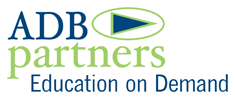 Actually, the answer to the question is both: Blended Learning AND Blended Education. The former is the ultimate goal; for success in blended learning, blended education is required. In general, the greater education world has coalesced around the notion of blended or hybrid learning. Such learning can refer to various delivery systems, e.g., online courses, virtual schools and universities, e-textbooks, computer-assisted instruction.
Actually, the answer to the question is both: Blended Learning AND Blended Education. The former is the ultimate goal; for success in blended learning, blended education is required. In general, the greater education world has coalesced around the notion of blended or hybrid learning. Such learning can refer to various delivery systems, e.g., online courses, virtual schools and universities, e-textbooks, computer-assisted instruction.
We know, however, that learning is really the work of the student, regardless of age or circumstances. When 30 students take the same English III course, the resulting learning will be different for each pupil. If 45 professionals attend the same workshop, there will be 45 different learning results. Our life experiences mold our learning. Home-life, religious beliefs, economic status, age, gender, family make-up , etc, etc all shape what each of us learns. Education providers who work in the realm of Blended Learning develop, deliver, and/or support Blended Education. Point of view makes a difference.
One classic point of view story is included in John A. Daly’s superbly, practical work, Advocacy. Daly reminds the reader of the time that Winnie-the-Pooh visited Rabbit’s hole, filled up on honey, and then became stuck as he tried to leave the hole. Pooh complained of doors that were too small. Rabbit retorted that Pooh had eaten too much. Their respective solutions, bigger doors or less consumption, were defined by point of view.
To create truly sustainable blended learning, advocates, policy makers, administrators, program designers, and teachers must keep our eyes focused on quality education. Thus, blended education will follow quality standards for online courses, such as those recommended by iNACOL and develop clear alignment with bricks and mortar course experiences. The educator point of view keeps student needs and requirements in mind while creating seamless, aligned learning experiences both online and f2f. The student blends these experiences to create learning. With such education, blended learning can provide expanded, flexible opportunities for all students.
